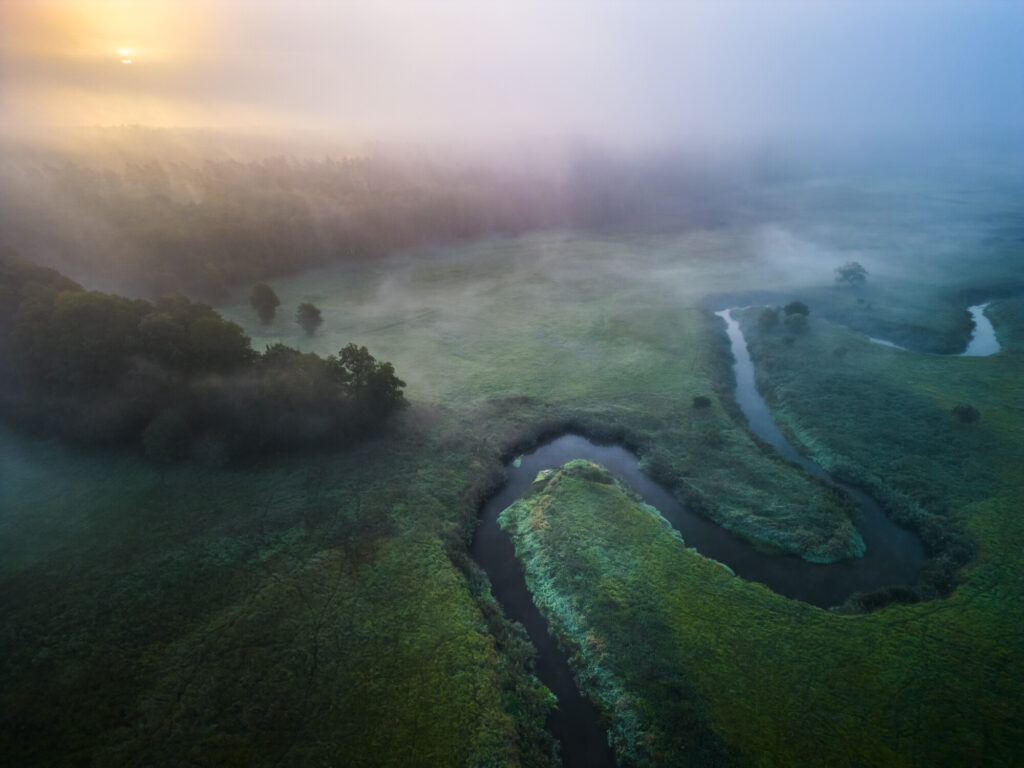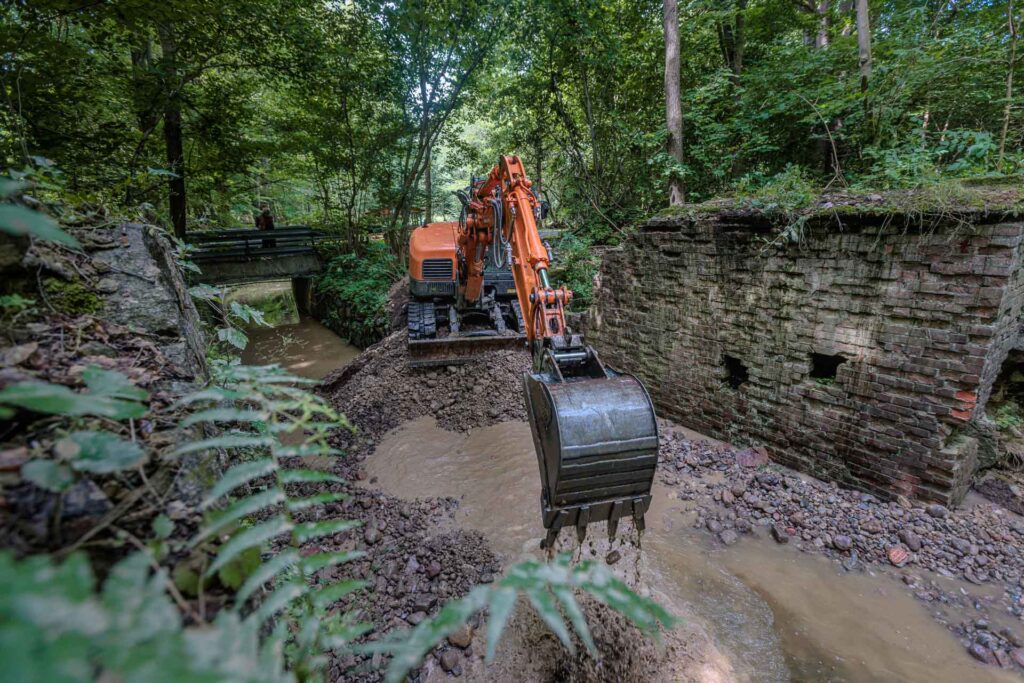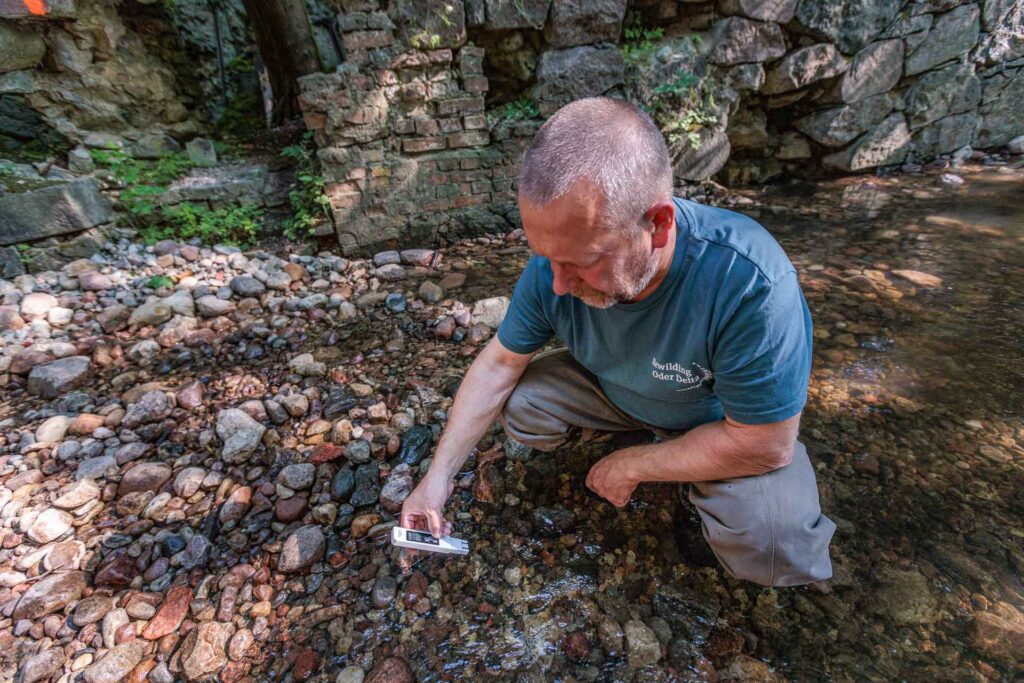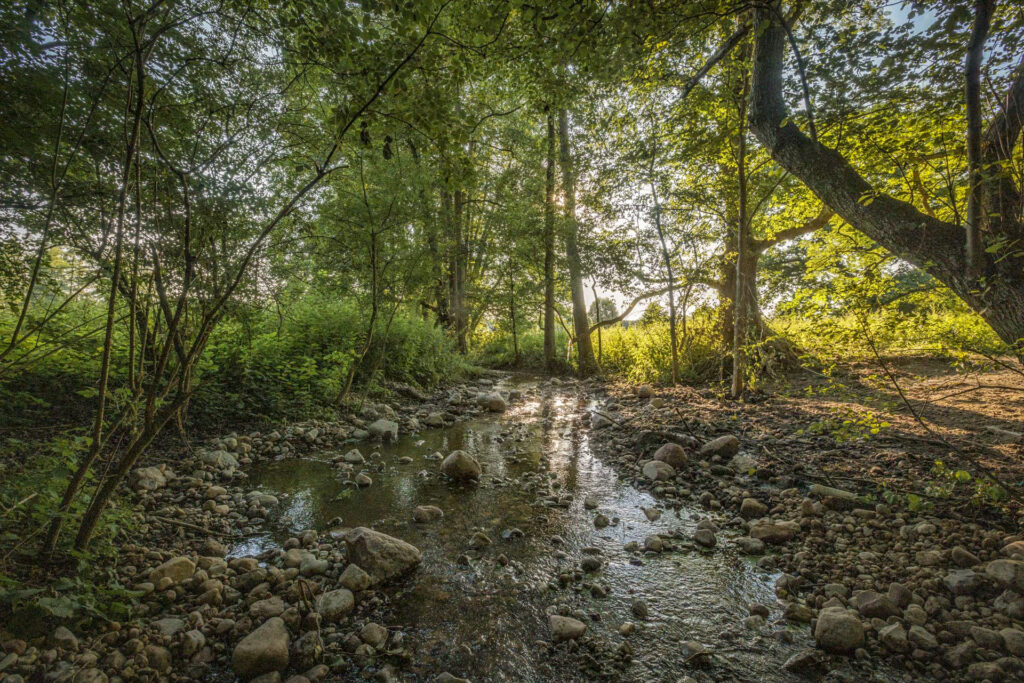Within the Oder Delta, which is shared between Germany and Poland, many rivers have been negatively impacted by human intervention. Current river restoration work carried out by the native rewilding staff and companions on the Polish facet is reinvigorating two tributaries of the Ina River, with advantages for nature and folks.
Rewilding Oder Delta
In the direction of free-flowing rivers
The revival of pure processes lies on the coronary heart of rewilding, because it helps to create ecosystems that operate as they need to. Rewilding rivers means giving them the house and freedom to handle themselves, with dynamic, pure processes such because the free circulate of water and flooding returning them to well being. The removing of dams and different limitations has already confirmed to be one of the crucial environment friendly and cost-effective methods of restoring rivers, delivering wide-ranging advantages to each nature and folks in a comparatively quick house of time.
Within the Polish a part of the cross-border Oder Delta rewilding panorama, restoration efforts carried out in June and July are already respiration new life into stretches of two waterways within the Ina River catchment. The removing of two weirs by the Rewilding Oder Delta staff and companions – complemented by efforts to recreate extra pure riverbed situations – will improve fish migration and replica alongside 20 kilometres of waterway. Native communities, foresters, and farmers may also profit from the more healthy rivers.

Neil Aldridge
Breaking limitations
The Wisełka and Biała Struga are two small streams that circulate into the Ina River, which itself is a crucial tributary of the Oder. In collaboration with the Society of the Pals of the River Ina and Gowienica (TPRIiG), the Rewilding Oder Delta staff restored stretches of the primary stream close to the village of Bącznik, and the second close to the village of Zabrodzie, with fieldwork persevering with for over a month.
The restoration work on the Wisełka concerned the partial removing of a weir, which was initially put in as a part of a former water mill. This had been stopping fish from shifting up and downstream for many years.

Rewilding Oder Delta
Three huge gravel and stone piles (or “prisms”) had been additionally constructed on the riverbed; the primary prism – situated within the ruins of the mill – helped to cut back the peak distinction between the riverbed on both facet of the eliminated weir, enabling fish emigrate extra simply.
On the Biała Struga, restoration work consisted of elevating the riverbed and slowing the circulate of water. The latter was achieved by constructing a sequence of two prisms. These prisms, which had been specifically designed by the Komes Water hydrotechnical design workplace, diminished the distinction between water ranges beneath an out of date weir, which was additionally eliminated.
Rapid impression
The useful impression of the river restoration work was seen nearly instantly. Solely a day after the prisms had been created, stream and river lampreys may very well be seen navigating the water above them. A variety of different aquatic species feed and breed on the gravel bottoms of rivers, so the return of many different animals is feasible. On a bigger scale, nature-rich river valleys additionally have a tendency to draw predatory mammals, resembling otters, foxes, and wolves.
“Along with fish from the salmon household, we are able to count on the restored sections of river to draw birds such because the white-tailed eagle, kingfisher, and gray wagtail,” says ornithologist Maciej Sobieraj, from the Basis for Local weather and Biodiversity.
“The removing of limitations and the restoration of the riverbed have improved situations for the replica and migration of many fish species, together with sea trout,” provides hydrobiologist Artur Furdyna, who coordinated the restoration work on behalf of Rewilding Oder Delta. “We’re additionally anticipating the return of indicator plant species, resembling water buttercup.”
Video exhibiting life returning to the Wiselka after restoration work.
Clear water advantages folks
In addition to enabling the return of helpful plant and animal species, the addition of gravel and stone piles within the Wisełka and Biała Struga may also profit folks. By slowing the present, and boosting the capability of the rivers to scrub themselves, the prisms will enhance each the amount and high quality of water on this a part of the catchment. This won’t solely improve pure situations in every waterway, however in surrounding forests and agricultural areas too. The restoration staff estimate an additional 3,000 m3 of water can be retained within the rivers, and an additional 4,500 m3 of their valley.
The rewilding of tributaries flowing into the Ina is extraordinarily necessary – not simply when it comes to restoring historic spawning grounds, but additionally to offer a buffer in case of air pollution occasions. Wholesome tributaries can present a refuge for aquatic species, the place they’ll wait out life-threatening situations that may come up throughout such occasions. This was noticed throughout the contamination of the Ina and Oder rivers in earlier years.

Rewilding Oder Delta
Lengthy-term preparation
Preparations for restoration work on the Biała Wisełka and Biała Struga took two years. Throughout this time, the Rewilding Oder Delta staff, with the help of TPRIiG, supplied financing, ready crucial documentation, and chosen a contractor.
“We recognized ten in-river constructions negatively impacting the connectivity of the rivers within the catchment,” says Piotr Piotrowski, who co-authored an analytical research on behalf of TPRIiG. “From these we in the end chosen two for removing. Eradicating out of date limitations is a large alternative to recreate correctly functioning river programs.”

Rewilding Oder Delta
The larger image
Man’s want to control and harness nature means an enormous variety of European waterways are choked with dams and different limitations. These have a massively destructive impression on fish, different wildlife, and folks. Within the Oder Delta rewilding panorama, the free circulate of water in numerous rivers has been restricted by dams and weirs. In collaboration with native companions, the rewilding staff are working to revive waterways throughout the delta by means of a variety of rewilding measures, together with the removing of such limitations.
 In Rewilding Europe’s Danube Delta rewilding panorama, the Rewilding Ukraine staff are additionally engaged in long-term efforts to renaturalise water circulate and connectivity, with the removing of dykes and dams and reconnection of channels respiration new life into the delta and its communities. Rewilding Europe’s native panorama groups and their companions are presently getting ready to take away dams in Swedish Lapland, the Central Apennines (Italy), the Southern Carpathians (Romania), and the Higher Côa Valley (Portugal). Rewilding Europe can be a member of Dam Elimination Europe, a burgeoning, European-wide coalition of organisations working to revive European rivers by eradicating outdated and out of date dams and weirs.
In Rewilding Europe’s Danube Delta rewilding panorama, the Rewilding Ukraine staff are additionally engaged in long-term efforts to renaturalise water circulate and connectivity, with the removing of dykes and dams and reconnection of channels respiration new life into the delta and its communities. Rewilding Europe’s native panorama groups and their companions are presently getting ready to take away dams in Swedish Lapland, the Central Apennines (Italy), the Southern Carpathians (Romania), and the Higher Côa Valley (Portugal). Rewilding Europe can be a member of Dam Elimination Europe, a burgeoning, European-wide coalition of organisations working to revive European rivers by eradicating outdated and out of date dams and weirs.
River restoration efforts on the Wisełka and Biała Struga benefitted from the massive expertise of TPRIiG, as had been carried out in collaboration with the Kliniska Forest District. They had been financed by Rewilding Europe and the Firmenich Basis.


















